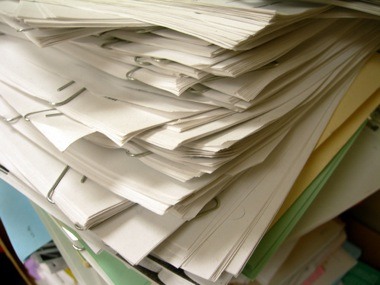Before going through the specific steps, we need to consider there being two kinds of paper documents: those we need to retain for the longer term (let’s call them records) and those that are transient in nature (call them working files). Different approaches work for these two basic kinds of papers or documents. The nature of your office and work has a great deal to do with which type of paper you can reduce or eliminate the most easily. A legal, accounting or medical office will likely have a harder time making its records paperless than an ad agency or political campaign office would. Decide which of the paper reduction steps you take and in what order you take them based on what you do and the importance of the various records and working files. Ten steps toward converting your office to a paperless one: These were some basic steps we used and recommend that can help you make the shift. We reduced our paper consumption about 95% over the past five years. If you have already made shifts toward a paperless office and have some other ideas, please let us know by posting a comment. Or let us know if you had any problems in trying to create a paperless office.
